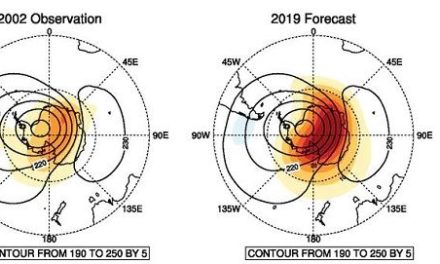
Understanding Weather – not predicting – 12 July 2013
What happened?
The persistent presence of an high-pressure core to the east of Namibia is a feature that one expects to find with a measure of certainty when viewing weather charts covering the subcontinent and the adjacent oceans. This is a natural feature described by the climatological books of reference, based on the data collected across the years.
So why should a perceived norm attract interest? We are well into the world of “climate change” so a return to the historic characteristics may seem out of place.
In this case this represents a link between two weather patterns. The older pattern ensures anticyclonic presence, more or less static, in both the upper air and the surface core, fed through this upper core. The more recent patterns maintain active mobile cores either sliding around less mobile vortex cores more clearly identified in the upper air or, not quite so often, pushing vortex cores away to the east.
Both provide a high pressure feed to the existing anticyclone so maintaining the synoptic status quo. At the same time this synoptic alignment provides east wind flow into our north which, flowing round the core, brings a northerly flow across central and southern Namibia.
Such directions mean warmth. Apart from overnight cooling, cold weather is kept at bay.
A further potential is that such a northerly flow can tap somewhat moister air equally persistent to our northwest. Such access brings fairly moist air southwards cooling it to condensation temperatures leading to cloud layer development. Add some converging turbulence and such a cloud layer becomes identifiably unstable.
Across the central parts extending the border, this daytime cloud band has appeared since early in the week and, Tuesday night for instance, produce a few drops of rain from this shallow but unusually turbulent band. What is also remarkable is that July is the driest month on our rainfall calendar.
What’s coming?
Currently, the prospects for the next few days remain dominated by the same anticyclonic control which sees one upper vortex form but fade west of the Orange estuary area by the weekend. The exception is Sunday evening when there should be a marked drop in temperature followed by a cold Monday, quickly returning to mild temperatures again on Tuesday.
A more prominent development appears by mid-week, west of the Cape, but with scant chance to influence local weather, except perhaps for the far south.
The prospect of continuing daytime warmth prevails, as does the unlikely prospect of showers for the southern districts













































